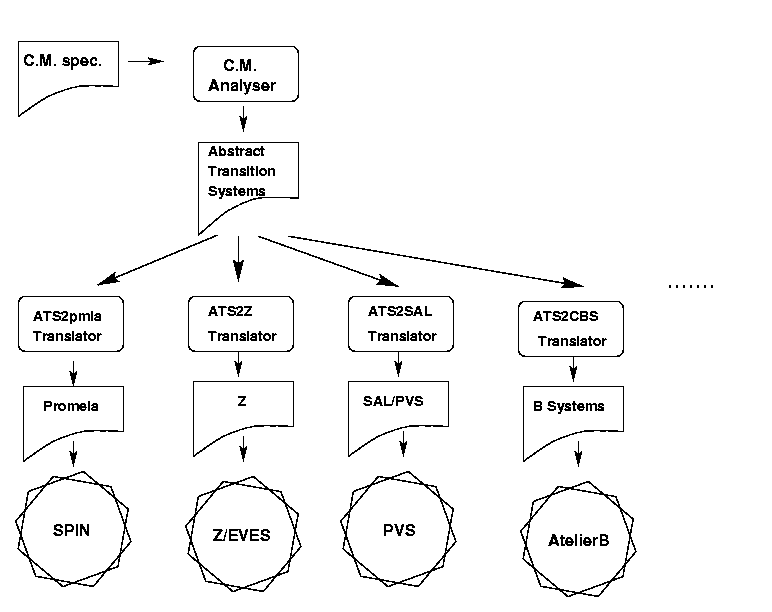| Configuration Machines Home Page
sdssssssscbvcbvsssslhkhhkjhkjhkjhkhkjkjhkssssssdsdsdsdsdsdsdsdsdssd |
| Configuration Machines Home Page
sdssssssscbvcbvsssslhkhhkjhkjhkjhkhkjkjhkssssssdsdsdsdsdsdsdsdsdssd |
|
|
||
|---|---|---|
|
|
|
|---|
C. Attiogbé, Mechanization of an Integrated Approach: Shallow Embedding into SAL/PVS, ICFEM'02, IEEE, October 2002, Shangai, ChinaC. Attiogbé, Formal Methods Integration for Software Development: Some Locks and Outlines,
RR 00.8, (Rapport de Recherche) Juilet 2000, France
C. Attiogbé, Système de controle d'accès : une spécification à base des machines à configurations,
AFADL'2000, Janvier 2000, Grenoble, FranceC. Attiogbé, Génération de code Promela pour la simulation et la vérification,
ICSSEA'99, Int. Conf. Software and Systems Engineering and their Applications, December 1999, Paris, FR
Paper (.ps) [in french], Slides [in english]C. Attiogbé, Specifying The Dagstuhl Light Control System by Configuration Machines,
RR - IRIN, December 1998C. Attiogbé, A simple formalism For Specifying Multifaceted Systems,
RR 181-IRIN, July 1998
|
|
| Configuration Machines are first translated
into a Abstract Transition Systems (Abstract Syntax)
Then, from this Abstract Transition Systems the input formats of various existing tools are computed (with more or less success ;) ). This enable one to use Configuration within various frameworks

The Configuration Machines Toolkit |
|
|
|
|
|---|
She's Project |
| Contact : email
IRIN - MSF Méthodes et Spécifications Formelles |
Addresse
IRIN - Faculté des sciences 2, rue de la Hussinière BP 92298 44 322 Nantes Cedex 3 |